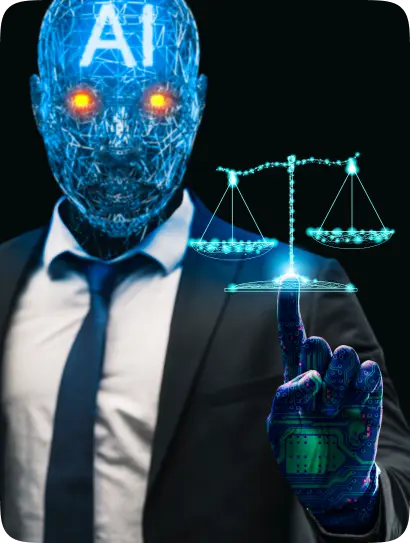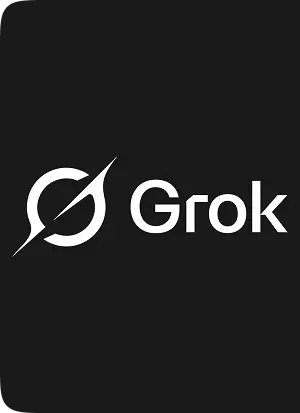Generative AI Development Services
Leading the charge in Generative AI with a commitment to ethical practices and a deep respect for its societal impact, ensuring that innovation is conducted transparently and responsibly.

Is Generative AI limited to content or can it reshape entire products?
Language-driven innovation is the next big thing. It empowers enterprises to get rid of data complexity & learning curve involved in queries. Simply ask the questions in your words and let gen AI & LLM do magic. Our LLM consulting & Generative AI services are designed to empower enterprises with both public & tailored-made models to craft compelling narratives, automate tasks, and create seamless conversational experiences on top of your proprietary data.
How can Azilen help with Generative AI Services?
How does Human‑in‑the‑Loop make Generative AI better?

How do we engineer Generative AI with ethics and governance?
- Bias & Fairness Audits to Ensure Equitable AI Outcomes.
- Privacy-First Design with Compliance to Global Data Regulations.
- Transparent Governance Framework for Accountable AI Lifecycle Management.
- Continuous Monitoring to Adapt with Evolving Business and Legal Needs.
LLM models we work with as part of our Gen AI Development Services

with Our AI-Powered Solutions.
Voice AI Engineering and Integration.
Which are the top Generative AI use cases across business functions?
- Converting structured data into natural language summaries
- Semantic search and Q&A over large document repositories
- Auto-tagging and classification of new documents
- Generating visual dashboards from raw data inputs
- Summarizing meeting transcripts into actionable points
- Transforming legacy documents into modern formats
- Dynamic content adaptation based on user profiles
- Personalized product or content recommendations
- Generating tailored onboarding or tutorial flows
- Adaptive FAQs that evolve from user queries
- Creating personalized marketing messages at scale
- Real-time adjustments to user-facing copy or tone
- Code snippets or template generation from requirements
- Automated test case creation and bug summary drafts
- Generating infrastructure-as-code scripts for deployment
- Creating internal documentation and API references
- Synthesizing team retrospectives or sprint reports
- Intelligent task summaries from issue trackers
- AI-generated draft replies for support agents to review
- Summarizing ticket history into quick context briefs
- Dynamic FAQs built from real-time support trends
- Auto-categorizing and tagging incoming tickets
- Generating follow-up emails or escalation summaries
- Synthesizing customer feedback into actionable themes
- AI-assisted brainstorming for features, campaigns, or UX flows
- Drafting first versions of design briefs or proposals
- Expanding prompt ideas into richer creative concepts
- Generating alternative taglines or phrasing options
- Auto-creating placeholder UX copy for wireframes
- Visual prompt generation for design moodboards
- Drafting policy documents and compliance guidelines
- Summarizing new regulations into actionable points
- Generating risk scenarios for assessments
- Creating checklists for audit prep
- Synthesizing legal clauses into plain language
- Updating internal guidelines from regulatory changes
What technologies power our Generative AI services?
- Generative Adversarial Networks (GANs)
- Variational Autoencoders (VAEs)
- Transformers
- Diffusion Models
- Language Models (e.g., GPT)
- Neural Radiance Fields (NeRF)
- OpenAI GPT-4 API
- Hugging Face Transformers
- PyTorch Lightning
- TensorFlow
- DeepMind JAX
- Runway ML
- Google Cloud Vertex AI
- AWS SageMaker
- Azure OpenAI Service
- NVIDIA DGX Systems
- Databricks for Gen AI
- Paperspace Gradient
Meet the Team Behind Our Gen AI Development Services

Researchers
Engineers
Engineers
Experts
Scientists
- AI-First Strategy
- Adaptive AI Solutions
- AI-Powered Personalization
- AI Security and Trust
- AI-Enabled Sustainability
- Parallel Engineering
- Agile AI Development
- Reduced AI Biased
- Enhanced Personalization
- Innovation and Creativity
- Scalability
- Real-Time Insights
- Adaptive Learning
How do we build Generative AI solutions?
Identification
Assessment
Engagement
Definition
Assessment
Collection
Cleaning
Transformation
Labeling
Checks
Selection
Setup
Training
Tuning
and Testing
with Systems
Testing
Monitoring
Loop
Optimization

APQR Excellence for Pharma Manufacturers
Data, Insights, and Technology!
What makes Azilen a top Generative AI Development Company in USA?
Since 2009
in DNA
Understanding & SMEs
Security Mechanism
Less Than Excellence
Case Studies: Real Transformations, Real Results
Frequently Asked Questions (FAQ's)
Generative AI development services help businesses design, build, and integrate AI systems that can create new content – like text, images, code, or even product ideas. It’s more than just training a model; it covers data preparation, selecting the right AI approach, testing, and bringing those capabilities into real products your users can actually use.
Generative AI can make your products smarter and your teams faster. It can draft reports, summarize data, create designs, personalize user experiences, and even suggest new features or ideas. When done right, it doesn’t just save time – it can actually help you stand out in your market.
Not at all. While text and images are the most visible, generative AI can also create audio, video, code, synthetic data for testing, and even design product mockups. It’s really about automating creative and repetitive processes – wherever you have enough data to learn from.
It depends on what you’re building. Some projects need large, high‑quality datasets; others can use existing AI models and APIs to get started. Many companies begin with small pilots, using the data they already have, and expand as they learn what works.
AI is the broad field of making software act intelligently. Machine learning is one way to do this, by learning patterns from data. Generative AI goes a step further: it doesn’t just analyze or predict – it actually creates new content, like writing an article or designing a logo.
A simple pilot or proof of concept can often be built in a few weeks. A production‑ready feature usually takes longer, especially if it needs to integrate with your systems, comply with regulations, and be tested for quality. It always helps to start with a clear, focused use case.
Generative AI focuses on creating new content – text, images, code, or designs – based on data it has learned from. AI agents, on the other hand, are designed to act: they plan, make decisions, and coordinate tasks, often using multiple AI models together. Think of Generative AI as the creator and AI agents as the doers that handle complex workflows.
Yes! Many solutions are designed to layer on top of existing products through APIs, plugins, or microservices. The key is a thoughtful integration plan so your teams and users can adopt it smoothly without big disruptions.
Costs vary depending on complexity, data needs, and integration. You might start with a small proof of concept to explore ROI before investing in a full solution. A good partner will help map cost to business value, so it’s clear what you’re paying for.
































 Talk to Our
Consultants
Talk to Our
Consultants Chat with
Our Experts
Chat with
Our Experts Write us
an Email
Write us
an Email







